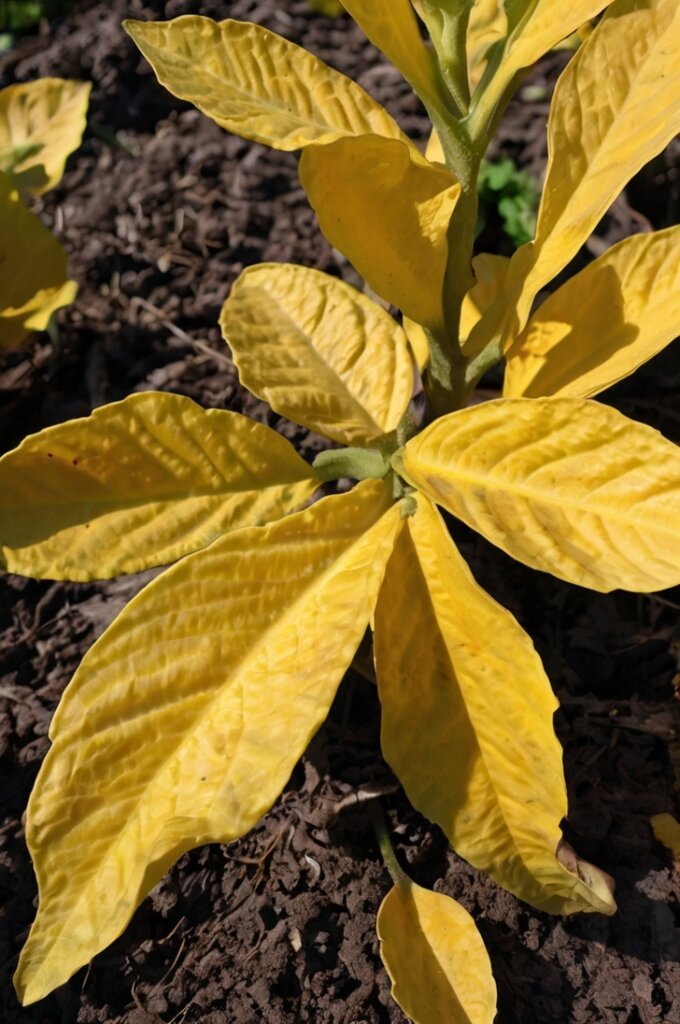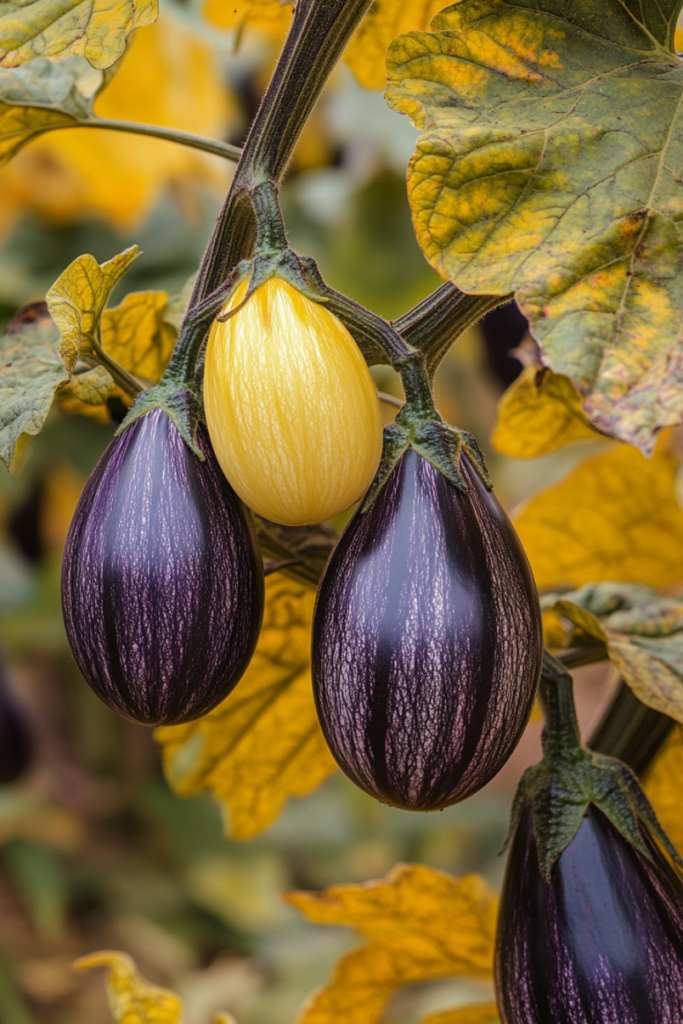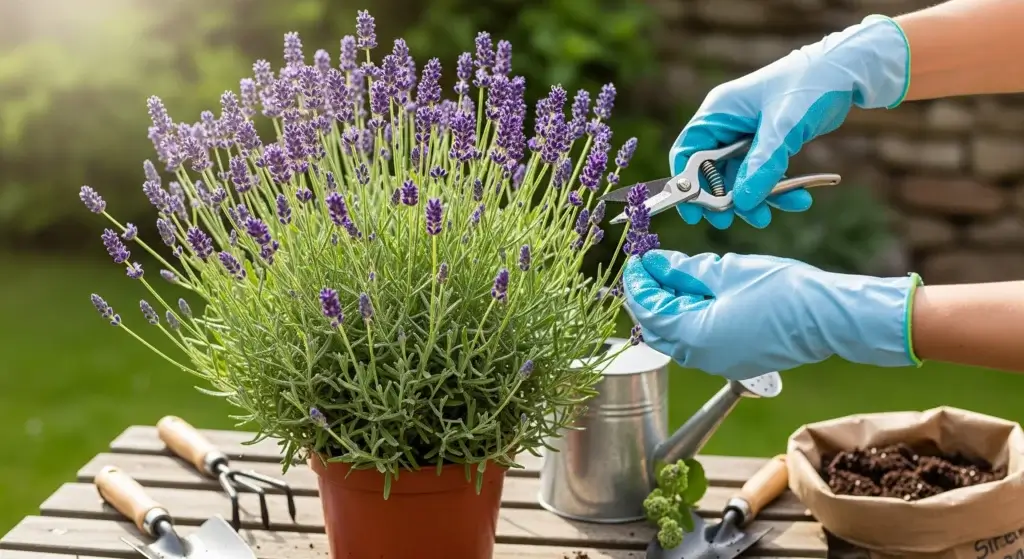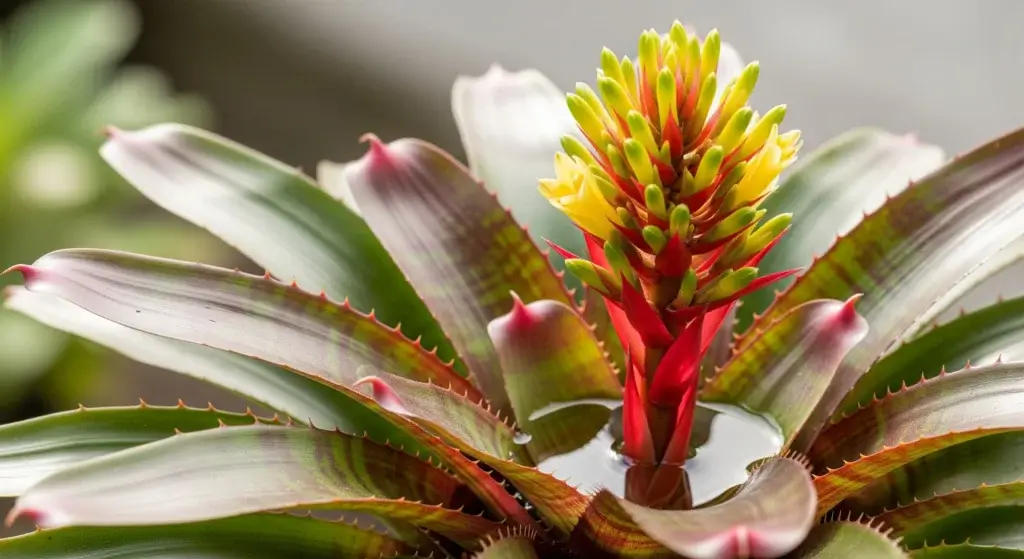
Eggplants are a favorite in many home gardens because of their deep flavor and versatility in cooking.
However, it can be concerning when you notice the leaves of your eggplant starting to turn yellow.
This often signals that the plant is under some kind of stress.
Much like a warning light on a car, yellow leaves mean something isn’t quite right.
Several factors could be causing this, including nutrient deficiencies, incorrect watering habits, pests, or even diseases.
Identifying the root cause is essential to treating the problem and keeping your plant healthy.
How Green Leaves Turn Yellow
When green leaves turn yellow, it’s usually a sign that something is affecting the plant’s health.
This change is often due to a process called chlorosis, where the plant’s chlorophyll—the pigment responsible for its green color—starts to break down.
Without enough chlorophyll, the plant can’t effectively convert sunlight into energy through photosynthesis, which is vital for its survival.
Common Causes of Yellowing Leaves in Eggplants

Watering issues
One of the most common reasons for yellowing leaves in eggplants is improper watering.
Both overwatering and underwatering can cause stress to the plant, leading to yellow leaves.
- Overwatering: If the soil remains too wet for too long, the roots may become waterlogged, which limits their ability to absorb oxygen. This results in root rot, causing the plant’s leaves to yellow and wilt.
- Underwatering: On the other hand, if the plant doesn’t receive enough water, it becomes dehydrated. This lack of moisture affects nutrient uptake, leading to yellowing leaves and, eventually, a weakened plant.
Nutrient deficiency
Eggplants are heavy feeders and need a well-balanced supply of nutrients to thrive.
A lack of certain nutrients can cause the leaves to turn yellow.
- Nitrogen deficiency: Nitrogen is crucial for plant growth and green leaf production. A nitrogen deficiency often shows up as yellowing of the older, lower leaves while the newer leaves remain green.
- Magnesium deficiency: This deficiency usually results in yellowing between the leaf veins, known as chlorosis. Magnesium is essential for chlorophyll production, and without it, the leaves lose their vibrant green color.
Pests and diseases
Pests and diseases are other possible causes of yellowing leaves in eggplants.
- Spider mites: These tiny pests feed on the undersides of leaves, sucking out the plant’s sap and leaving behind yellow spots. Eventually, the leaves may turn entirely yellow and drop.
- Fungal infections: Diseases like verticillium wilt or fusarium wilt can cause the plant’s leaves to yellow. These fungal infections often start with yellowing of the lower leaves and gradually work their way up the plant.
Soil pH imbalance
Eggplants prefer slightly acidic soil with a pH between 6.0 and 6.5. If the soil is too acidic or too alkaline, it can interfere with nutrient uptake, leading to yellowing leaves.
Testing your soil’s pH can help you determine if this is the issue.
Environmental Stress
Environmental factors like extreme temperatures, poor light conditions, or wind exposure can also contribute to yellowing leaves.
- Temperature stress: Eggplants thrive in warm climates. Prolonged exposure to cold temperatures, especially below 55°F (13°C), can cause stress and lead to yellowing leaves.
- Insufficient sunlight: Eggplants need at least six to eight hours of sunlight per day to grow properly. Without enough sunlight, the leaves can yellow, as the plant struggles to produce enough energy.

How to Treat Yellow Leaves on Eggplants
Once you’ve identified the cause of the yellowing leaves, you can take the necessary steps to treat the issue.
Here’s how to address the most common problems:
Adjust watering practices
Ensure that you are watering your eggplants appropriately.
The soil should be kept moist but not soggy.
A good rule of thumb is to water deeply once or twice a week rather than shallowly every day.
Assess nutrient levels
Start by testing your soil for nutrient deficiencies.
A soil test kit will help you determine what nutrients are lacking.
Based on the results, apply a balanced fertilizer or specific amendments like compost or manure to restore nutrient levels.
Control Pests and Diseases
For pest issues like spider mites, use insecticidal soap or neem oil to treat the plants.
Keep an eye on the leaves and treat them regularly to prevent further infestations.
If a fungal disease is the cause, remove and destroy affected leaves to prevent the spread of the infection.
Fungicides can also help control fungal diseases, but prevention through proper watering and spacing is key.
Test and correct soil pH
Use a soil test kit to check the pH of your soil.
If it’s too acidic, you can add lime to raise the pH.
If it’s too alkaline, adding organic matter like compost or sulfur can help lower the pH.
Reduce environmental stress
If environmental stress is suspected, consider relocating potted plants to a more suitable area.
Ensure that your eggplants receive enough sunlight by planting them in a location that gets at least six hours of direct sun daily and place spacing between plants to promote healthy growth.
Protect your plants from cold temperatures by using row covers or planting after the danger of frost has passed.

Preventive Measures for Healthy Eggplants
Prevention is always better than cure. Here are some preventive measures to keep your eggplants healthy and avoid yellowing leaves:
- Soil health: Before planting eggplants, enrich your soil with organic matter such as compost or well-rotted manure. This improves soil structure and nutrient content.
- Regular monitoring: Keep an eye on your plants throughout the growing season. Early detection of problems can save your eggplants from severe damage.
- Proper watering techniques: Use mulch around your plants to retain moisture while preventing weeds from competing for nutrients and water.
- Pest and disease prevention strategies: Maintain cleanliness in your garden by removing debris that could harbor pests and diseases. Consider companion planting with herbs that deter pests naturally.
- Choosing the right variety: Select eggplant varieties that are known for their resistance to common pests and diseases in your area.
- Rotate crops: Avoid planting eggplants in the same spot every year. Crop rotation helps prevent soil-borne diseases and nutrient depletion.
- Provide proper spacing: Ensure adequate spacing between plants to allow for good air circulation, which reduces the risk of fungal infections.
Conclusion
Yellow leaves on eggplants can be a frustrating problem for gardeners but understanding the causes and implementing proper care techniques can help restore your plants’ health.
By addressing nutrient deficiencies, managing watering practices, controlling pests, and taking preventive measures, you can enjoy a bountiful harvest of beautiful eggplants.
FAQs
If only a few leaves are turning yellow, it could indicate localized issues such as pest damage or specific nutrient deficiencies affecting those particular leaves.
If the yellowing is caused by a correctable issue like nutrient deficiency, overwatering, or pest infestation, addressing the problem can often lead to leaf color restoration. However, if the damage is severe or the underlying cause is not resolved promptly, it may be difficult or impossible to reverse the yellowing completely.
While general-purpose fertilizers work well, it’s best to choose one formulated for vegetables that provides balanced nutrients tailored for eggplant growth.



